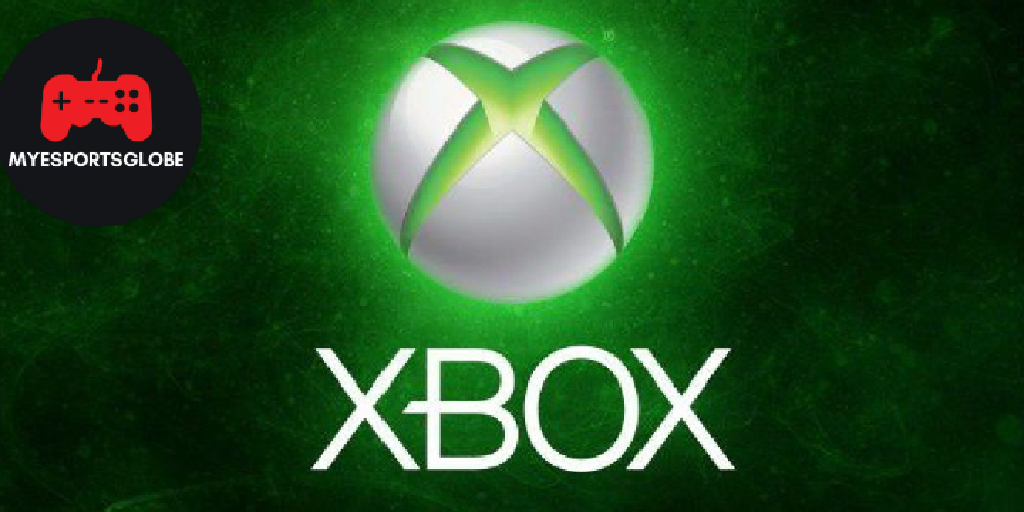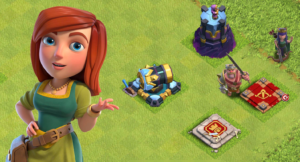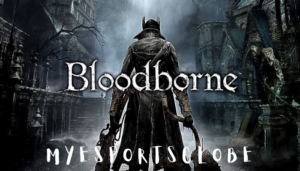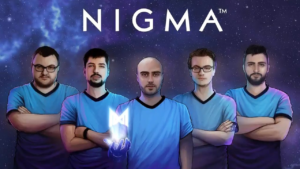Xbox Series X is an upcoming home video game console developed by Microsoft. It was announced during E3 2019 as “Project Scarlett” and is scheduled for release in November 2020. The console is one of the planned products in the fourth-generation family of Xbox hardware, succeeding the current Xbox One line (and, in particular, the Xbox One X as the high-end flagship model). Microsoft is prioritizing hardware performance, including support for higher display resolutions (up to 8K resolution) and frame rates, real-time ray tracing, and use of high-speed solid-state drive to reduce loading times.
Microsoft is promoting a gamer-centric approach to their new hardware, including free upgrades of Xbox Series X-enhanced versions of Xbox One games via their “Smart Delivery” initiative, and backwards compatibility with previous generation Xbox games, controllers and accessories. The console will also take advantage of their gaming subscription service Xbox Game Pass, as well as remote cloud gaming on mobile devices via their xCloud streaming platform.
To read more about your favourite games go to our website, MyEsportsGlobe.
If you haven’t yet then do follow MyEsportsGlobe on social handles to get regular updates –
HISTORY OF XBOX X –
When Microsoft’s Xbox team started work on the successor to the Xbox One consoles, their primary targets were to at least double the graphical performance of the Xbox One X as measured by its floating point operations per second (FLOPS), and increasing CPU performance four-fold compared to Xbox One X while maintaining the same acoustic performance from the Xbox One consoles.
As the engineers collected power requirements to meet these specifications, they saw these parts would draw a large amount of internal power (approximately 315 W) and would generate a significant amount of heat. This led to the decision to split the components onto two separate circuit boards; one housing the CPU/GPU, memory, and power regulators, and a second board to act as a Southbridge board for slower input/output (I/O) functions.
The boards mounted on opposite sides of an aluminum chassis helped to create air channels for cooling. The remaining components – the heat sink, the electric shielding, the power supply, the optical drive, and the cooling fan were then arranged in a Tetris-like fashion, according to principal designer Chris Kujawski, to achieve a compact form factor, resulting in the tower-like structure. To meet the acoustics factor, the system includes numerous sensors for controlling the speed of the fan, and the large open top was necessary to assure good air flow through the system.
While certain elements like the optical drive, air flow requirements, and heat sink size fixed certain dimensions in the overall form factor, they were satisfied they were able to end up with a square footprint for the unit.
Microsoft first teased new Xbox hardware under the codename “Project Scarlett” during its E3 2019 press conference. Microsoft said they wanted a “soft” transition from Xbox One to Scarlett, with Scarlett supporting backward compatibility with all games and most hardware supported on the Xbox One. The console was formally unveiled as the Xbox Series X during The Game Awards 2019, as well as its final design and a late-2020 release date.
Following the unveiling, a Microsoft spokesperson stated that Xbox Series X constituted an entry in a fourth generation of Xbox hardware, which will be branded simply as “Xbox” with no subtitle. Prior to the E3 reveal, it had been speculated that Microsoft was also developing a second, lower-end console codenamed “Lockhart”, to accompany what was unveiled as Scarlett, which was later reportedly named Xbox Series S.
Series x hardware –
Xbox head Phil Spencer stated that Microsoft was prioritizing high frame rates and faster load times as a priority over higher resolutions, which the Series X achieves via the better-matched capabilities of the CPU and GPU.
The Xbox Series X is powered by a custom 7 nm AMD Zen 2 CPU with eight cores running at a nominal 3.8 GHz, or when simultaneous multithreading (SMT) is used, at 3.6 GHz. One CPU core is dedicated to the underlying operating system. The graphics processing unit is also a custom unit based on AMD’s RDNA 2 graphics architecture. It has a total of 56 compute units (CUs) with 3584 cores, with 52 CUs and 3328 cores enabled, and will be running at a fixed 1.825 GHz. This unit is capable of 12.155 teraflops of computational power.
The unit ships with 16GB of GDDR6 SDRAM, with 10GB running at 560GB/s primarily to be used with the graphics system and the other 6GB at 336GB/s to be used for the other computing functions. After accounting for the system software, approximately 13.5GB of memory will be available for games and other applications, with the system software only drawing from the slower pool.
The Xbox Series X target performance is to render games at 4K resolution at 60 frames per second. Microsoft stated that the console CPU will be four times as powerful as the Xbox One X, including support for real-time ray-tracing, up to 120 frames per second rendering, and 8K resolution via the HDMI 2.1 standard. The console will also support new features of the HDMI 2.1 standard including variable refresh rate (VRR) and Auto Low Latency Mode (ALLM) that are currently being incorporated into newer televisions. The console will have dedicated audio hardware acceleration. A feature called “audio ray tracing” will use the graphics ray tracing processors to process spatial audio in the same manner to improve the audio immersion for the player.
Storage architecture –
The Xbox Series X utilises a new storage solution, known as the Xbox Velocity Architecture, that includes both hardware and software components to improve transfer speeds within the console, reduce the size of digital downloads, and give developers more flexibility. Central to this is the internal storage of the Xbox Series X, a custom 1TB NVM Express (NVMe) SSD with a raw input/output throughput of 2.4GB/s. An on-board compression/decompression block includes both the industry standard Lempel-Ziv decompression algorithm and a proprietary one geared for game textures, and gives a combined throughput as high as 4.8GB/s.
Within the software, a new DirectStorage API within DirectX allows developers to fine-tune priority to input/output aspects with other processing threads. The software provides sampler feedback streaming that aids in loading multiple textures in segments to deal with level of detail rendering rather than having to read these textures as a whole before using them.
Developers at The Coalition found that without any changes to their code, Gears 5 loaded four times faster on Xbox Series X than Xbox One X due to the higher throughput on memory and storage, and would be able to increase this further once they incorporated the new DirectStorage API routines.
The console will support external storage through a proprietary SSD expansion card inserted into the back of the console, which will be manufactured exclusively by Seagate Technology on launch. Due to the Xbox Velocity Architecture, games optimized for Xbox Series X can only be stored on the internal SSD or an expansion card. External USB storage can be used to store games for past Xbox consoles (including Xbox One and its predecessors). All SSD storage on the architecture uses PCI Express 4.0.
Design –
The Xbox Series X’s console form is designed to be unobtrusive and minimalistic. It has a 15.1 cm × 15.1 cm (5.9 in × 5.9 in) footprint and is 30.1 cm (11.9 in) high and weighs 4.45 kg (9.8 lb); while configured in this vertical orientation, the unit can also be used on its side. Its forward-facing features present only the main power button and an Ultra HD Blu-ray drive.
The top of the unit is a single powerful fan. Spencer stated that the console is as quiet as Xbox One X. The Series X includes an HDMI 2.1 output, the storage expansion slot, three USB 3.2 ports, and an ethernet port. The console does not include an infrared blaster or HDMI pass-through like the Xbox One line, supporting HDMI-CEC instead. An earlier leak had suggested a TOSLINK port for digital audio, but this was eliminated in the final design.
System software and features –
The Xbox Series X uses a similar user interface (UI) to the Xbox One, but there has been a 40% reduction in memory use to improve its speed. According to the UI development team, the Home section loads in about half the time as it did on the Xbox One. Other changes include adding rounded UI elements, a more-readable font for text elements, rearrangement of certain aligned features, and improvements in the sharing functions. These changes will also be brought to the Xbox One system software as well around September 2020.
The console will leverage the gaming subscription service Xbox Game Pass, giving users unlimited access to hundreds of downloadable games for a monthly fee. As with the Xbox One, all first-party (and selected third-party) titles will appear on the platform upon release. As part of the service, users will be able to stream games remotely from their console onto a supported mobile device via their cloud gaming platform xCloud. This will be available at no extra cost to Game Pass Ultimate subscribers.
Controller and accessories –
The console will ship with an updated version of the wireless Xbox One controller, which was aimed to be more ergonomic to fit a larger range of hand sizes. It will include all the same key buttons as the past controllers: two analog joysticks that can be depressed, a circle pad, four action buttons, two system buttons (“View” and “Menu”), the main Xbox face button, two grip triggers (left and right) and two shoulder buttons (left and right).
The new controller adds a “Share” button alongside the “View” and “Menu”, which is used to record and share video clips or screenshots from gameplay. Microsoft found that by aiming the size to fit an eight-year-old’s hands, they were able to make the design fit a larger section of the population, and thus features more sculpted grips, and reducing and rounding the trigger buttons.
The D-pad is a new concave design that senior console designer Ryan Whitaker said was a means to merge the normal D-pad style on the standard Xbox One controller and the version on the Elite variant to accommodate a range of playstyles. Small tactile dot patterns have been added to the buttons to help players orient fingers on the controls. The controller will continue to use two AA batteries, though a rechargeable battery pack will be available as an accessory. Microsoft found from focus group studies that players were nearly split 50/50 on the use of batteries through recharging and thus gave the controller the flexibility for both sides.
The controller uses the same wireless protocol introduced by the Xbox One, and is backward compatible with existing Xbox One consoles. Existing Xbox One controllers will also be compatible with Xbox Series X. The new Xbox Series X controller also supports the Bluetooth Low Energy standard allowing it to pair with mobile devices and other hardware supporting that standard, and will have internal storage to remember those connections. The new controller uses a standard USB-C charging port for its battery.
GAMES –
Developers will be able to optimize existing and newly released Xbox One games to take advantage of Xbox Series X technologies, with higher graphics throughput and faster frame rates, ray tracing, and support for the console’s storage architecture. These games will be marketed with an “Optimized for Series X” logo. Microsoft is offering a distribution framework known as “Smart Delivery” that will automatically download optimized versions of Xbox One games for the console when available; Microsoft has positioned this feature at publishers who plan to release Series X-specific versions of games after releasing on Xbox One, and to users migrating from an existing Xbox One to Series X.
Microsoft is not restricting the ability for developers to release games that are exclusive to Xbox Series X. The company is preferring a “soft” transition more in line with PC gaming, where developers can target optimal play on high-end hardware (such as Series X), but still allow the game to be played with reduced fidelity on lower-end hardware (such as older Xbox One consoles). Xbox Game Studios head Matt Booty stated that Microsoft wanted to ensure that those who buy Xbox One consoles prior to the Series X launch would still “feel that they made a good investment and that we’re committed to them with content”.
Spencer explained that this approach was about putting the player at the center rather than the console, and not “forcing” users to migrate. According to Spencer, this concept is enabled in part by many of the Xbox Game Studios subsidiaries having familiarity with developing also on personal computers, where there is a wide range of hardware targets to meet. The same approach in personal computer game development was taken to make Xbox Series X games that could scale down to perform well on the Xbox One consoles while still taking advantage of the new hardware.
Backward compatibility –
Microsoft has stated that Xbox Series X will support all games playable on Xbox One (excluding those that require the Kinect sensor), including those Xbox 360 and original Xbox console games currently supported through backward compatibility on the Xbox One, thus allowing the console to support four generations of games.
To achieve this level of compatibility, Microsoft announced they would no longer be bringing any additional Xbox 360 or original Xbox games into the Xbox One backward compatibility program in June 2019, and instead using their manpower to make sure these older games were playable on the Xbox Series X. Backward compatibility is planned as a launch feature, with Microsoft expected to have put in more than 200,000 man hours in validating thousands of games; Spencer said in December 2019 that he himself had been helping to test backward compatibility games.
As Microsoft neared launch, they reopened the means for players to suggest additional games to add to backward compatibility, stating “Resurrecting titles from history often presents a complex mix of technical and licensing challenges, but the team is committed to doing everything we can to continue to preserve our collective gaming legacy.
To read more on the gaming console click here, to know about upcoming PS.






